Posts Tagged: chrysalis
They Didn't Get the Memo
They didn't get the memo. Summer is over. Fall is underway. Winter is coming (Dec. 21). But the Gulf Fritillaries (Agraulis vanillae) are still...
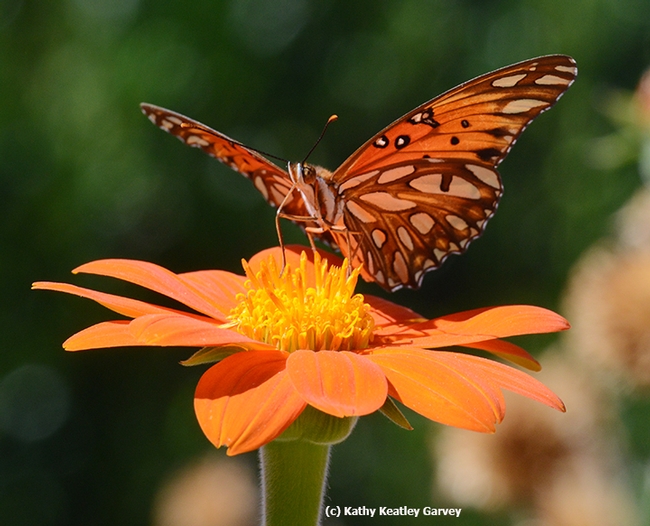
Gulf Fritillaries are still flying--and mating and laying eggs--in November. This one is nectaring on Mexican sunflower (Tithonia). (Photo by Kathy Keatley Garvey)
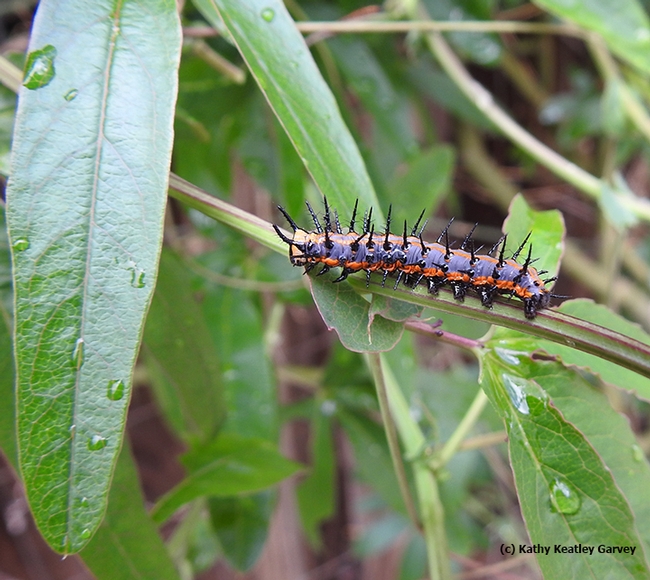
A Gulf Fritillary caterpillar in November. (Photo by Kathy Keatley Garvey)
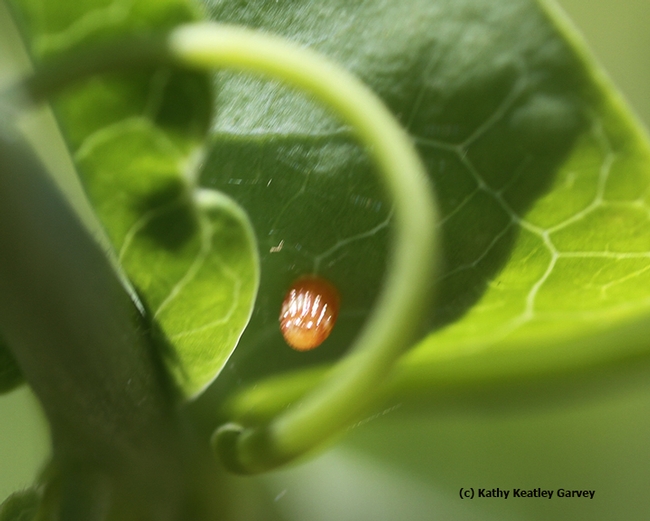
A tiny Gulf Fritillary egg. The egg is about the size of a sesame seed. (Photo by Kathy Keatley Garvey)
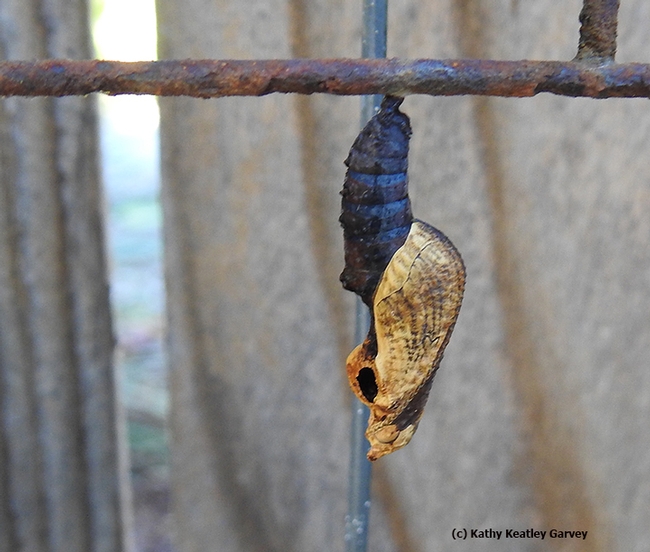
No Gulf Fritillary will ever eclose from this chrysalis. Note the parasitoid hole. It was a large parasitoid--a big tachinid fly or an ichneumonid or wasp--says Art Shapiro, UC Davis distinguished professor of evolution and ecology. (Photo by Kathy Keatley Garvey)
It Happens: Nature Isn't Perfect
If you engage in a mini-monarch conservation project, you know the joy of watching the egg-caterpillar-chrysalis-adult transformation. It's one of...
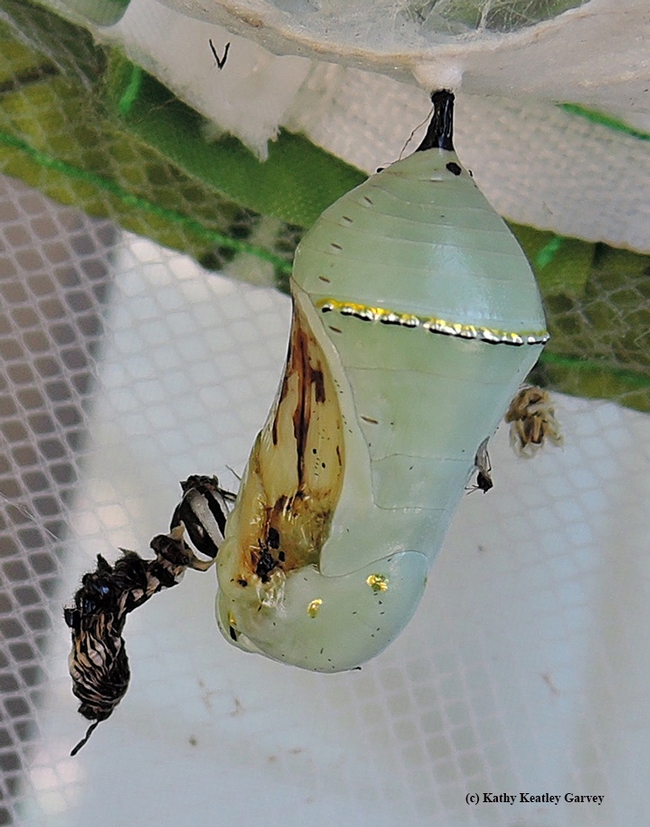
A monarch chrysalis, cannibalized by a hungry caterpillar. (Photo by Kathy Keatley Garvey)
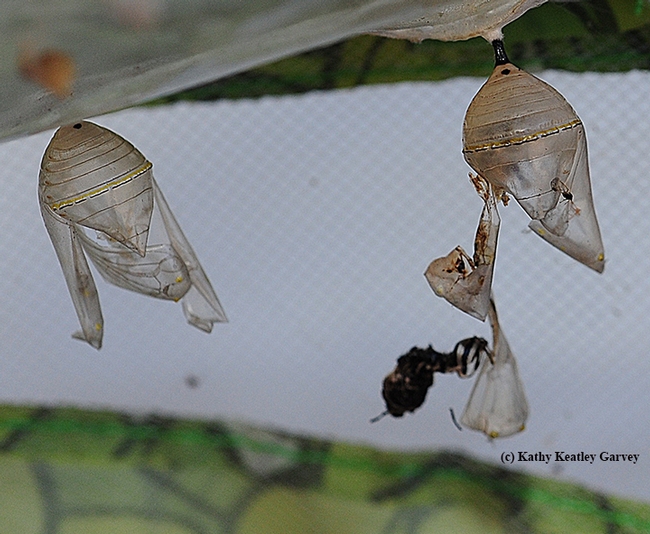
From a chrysalis to a pupal case--now where's the monarch? (Photo by Kathy Keatley Garvey)
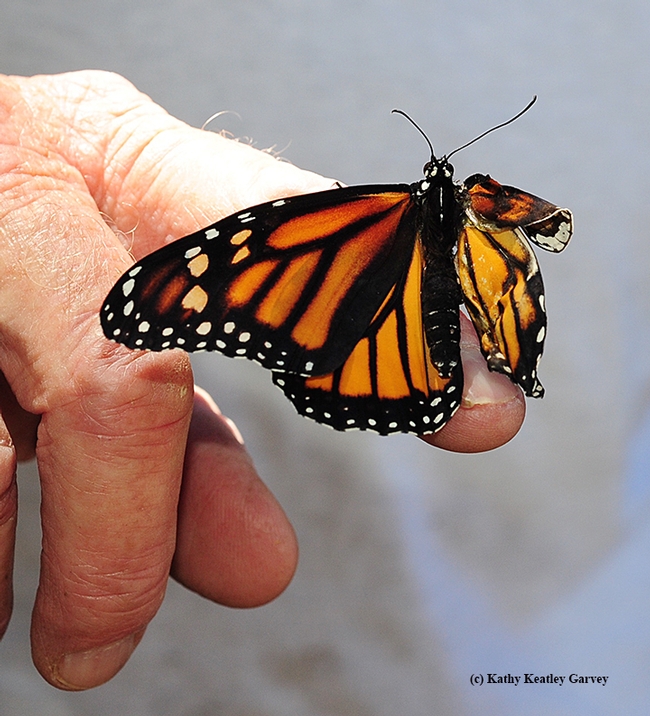
It's a girl, but she has a deformed wing.(Photo by Kathy Keatley Garvey)
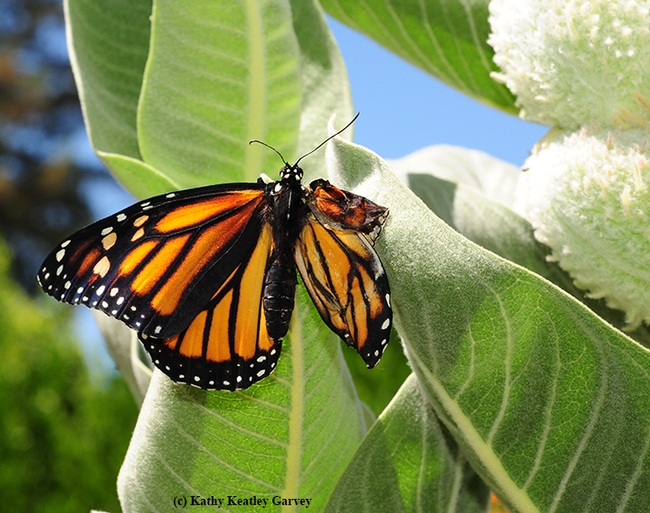
Newly eclosed, but deformed, monarch clings to a milkweed, Asclepias speciosa. (Photo by Kathy Keatley Garvey)
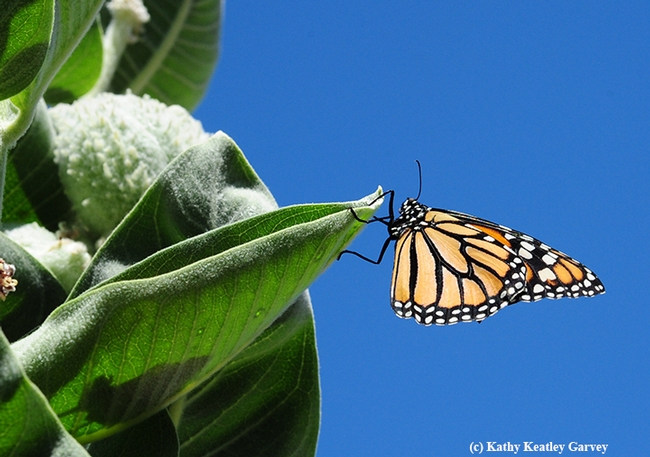
Perfect from this angle! This is her best side, truly. (Photo by Kathy Keatley Garvey)
Miracles Do Happen
For the last several months, we've seen monarchs laying eggs on our narrow-leafed milkweed. A daily check yielded "zero" caterpillars. Zero. Nada....
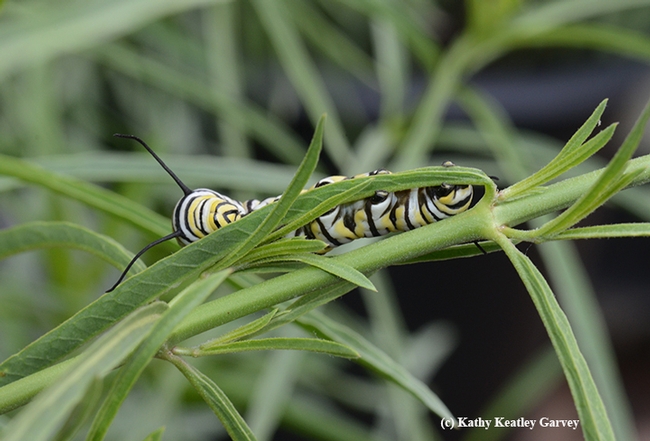
A fifth instar caterpillar partially hidden in the narrow-leafed milkweed. (Photo by Kathy Keatley Garvey)
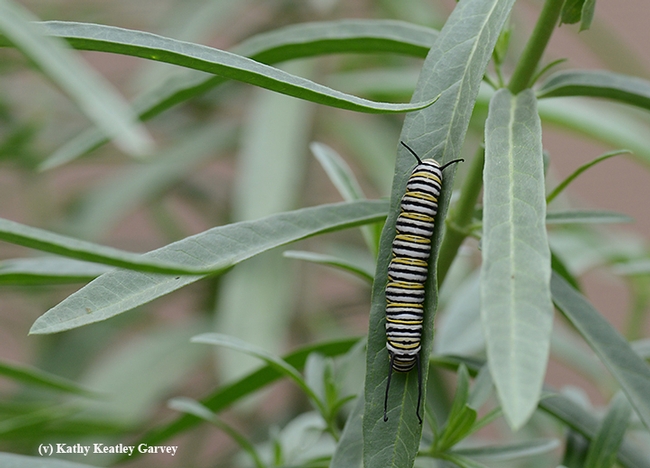
Hidden, but there it is! (Photo by Kathy Keatley Garvey)
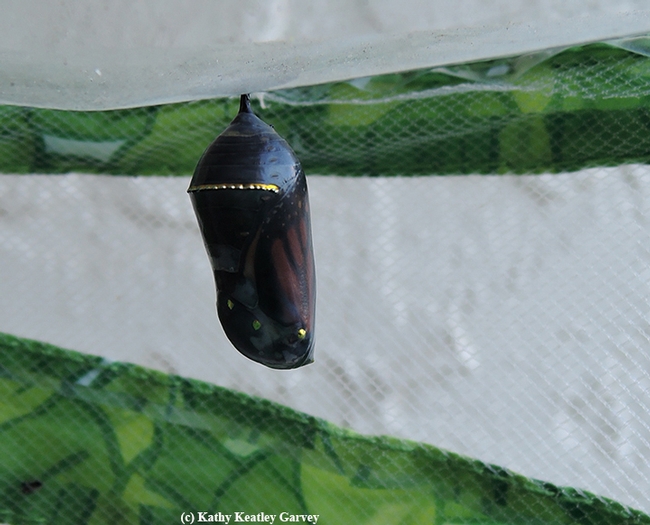
The chrysalis turned from jade green to transucent. You can see the butterfly inside, almost ready to eclose. (Photo by Kathy Keatley Garvey)
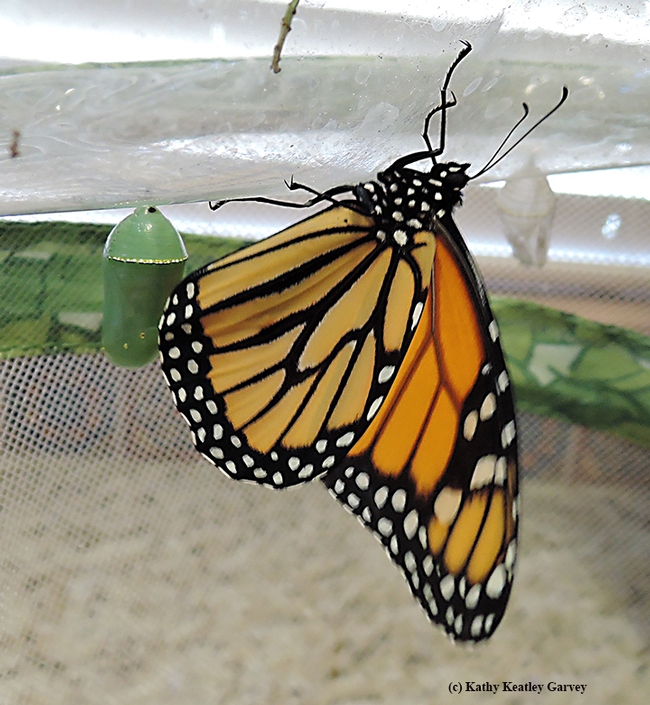
The newly emerged male monarch dries its wings. At left is the second chrysalis, which turned out to be a female. (Photo by Kathy Keatley Garvey)
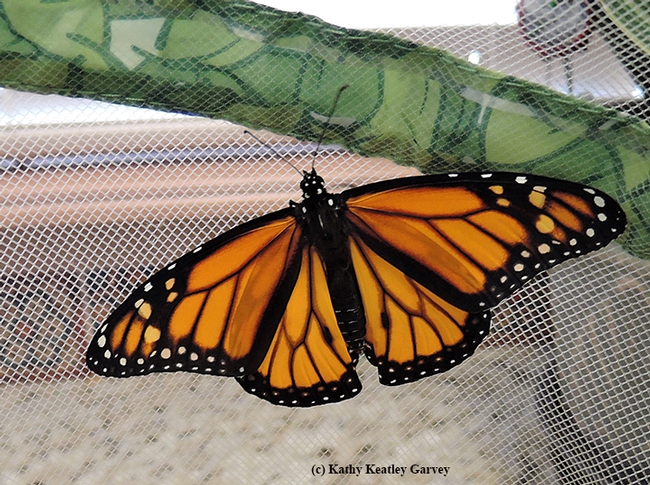
The first male monarch of the season, ready to be released. (Photo by Kathy Keatley Garvey)
Happy Father's Day!
Where have you been? For the last several weeks, we've been watching for signs of the first seasonal monarch caterpillar on our narrow-leafed...
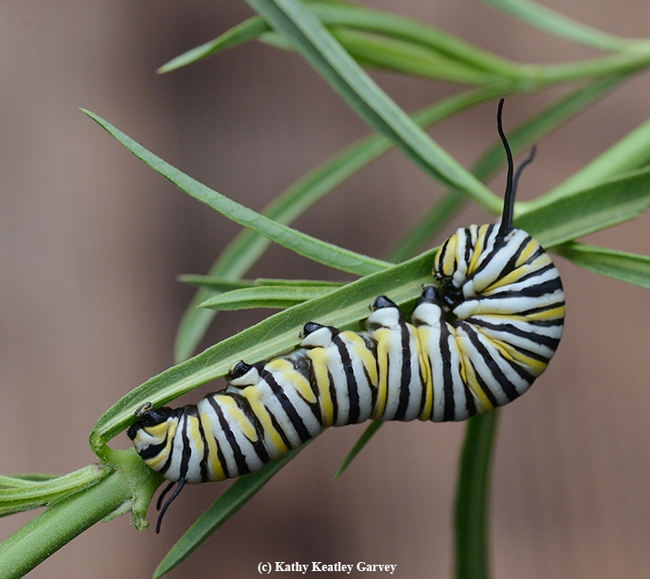
A monarch caterpillar chewing on a narrow-leafed milkweed. (Photo by Kathy Keatley Garvey)
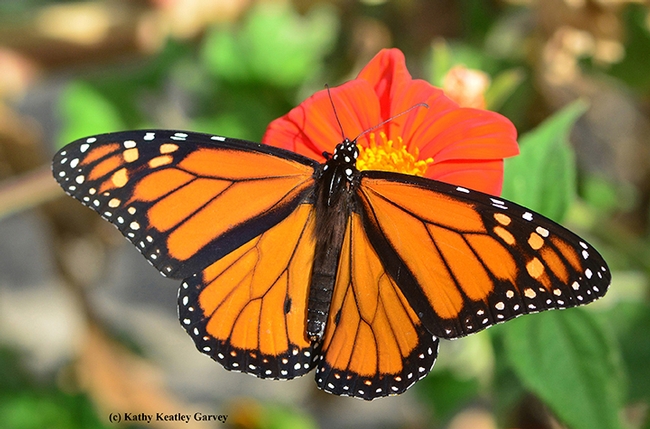
A male monarch butterfly on a Mexican sunflower (Tithonia). How can you tell it's a male? Note the distinguishable black spot on each hind wing. (Photo by Kathy Keatley Garvey)
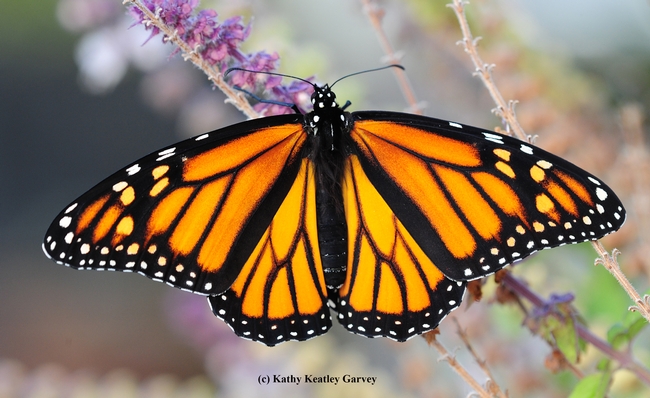
A female monarch butterfly on lavender. Note the absence of the black spots on the hind wings. (Photo by Kathy Keatley Garvey)
Counting Chickens, Counting Chrysalids
Counting butterflies before they eclose from their chrysalids is sort of like counting chickens before they hatch. We've done both: raised...
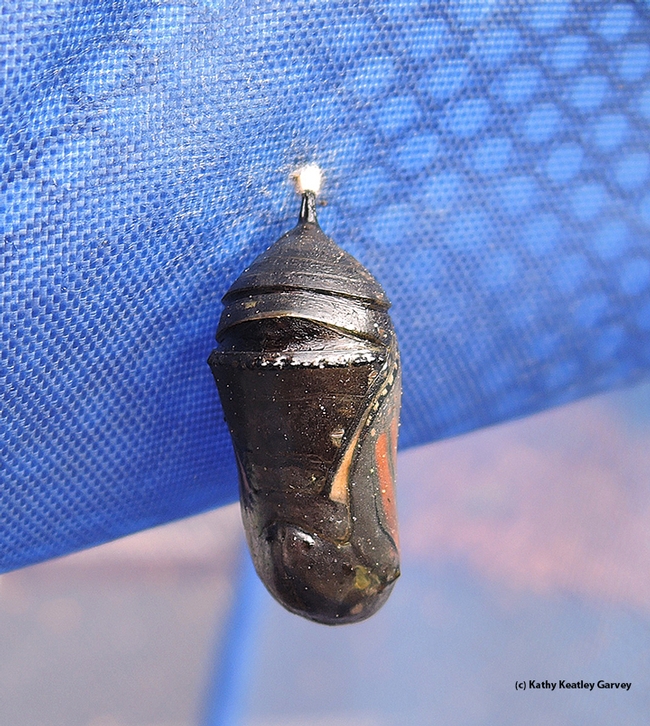
This monarch chrysalis, hanging outdoors in a hamper, is apparently not viable. It turned from jade green to back on Nov. 15. (Photo by Kathy Keatley Garvey)
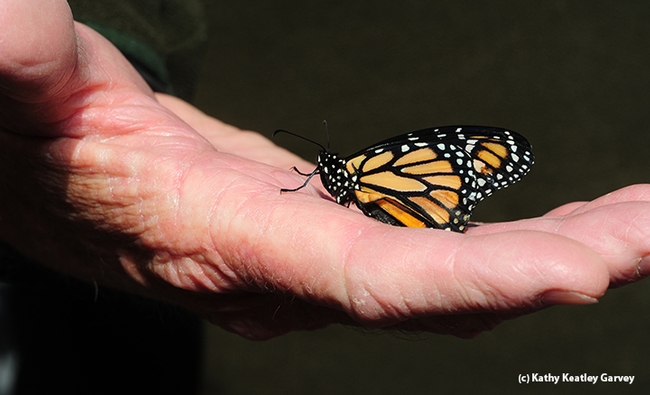
An earlier success in monarch rearing. (Photo by Kathy Keatley Garvey)
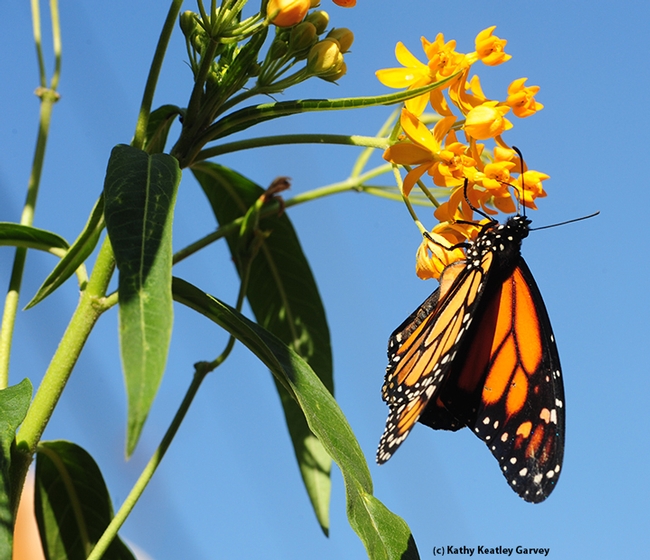
A newly released monarch on a milkweed. (Photo by Kathy Keatley Garvey)

